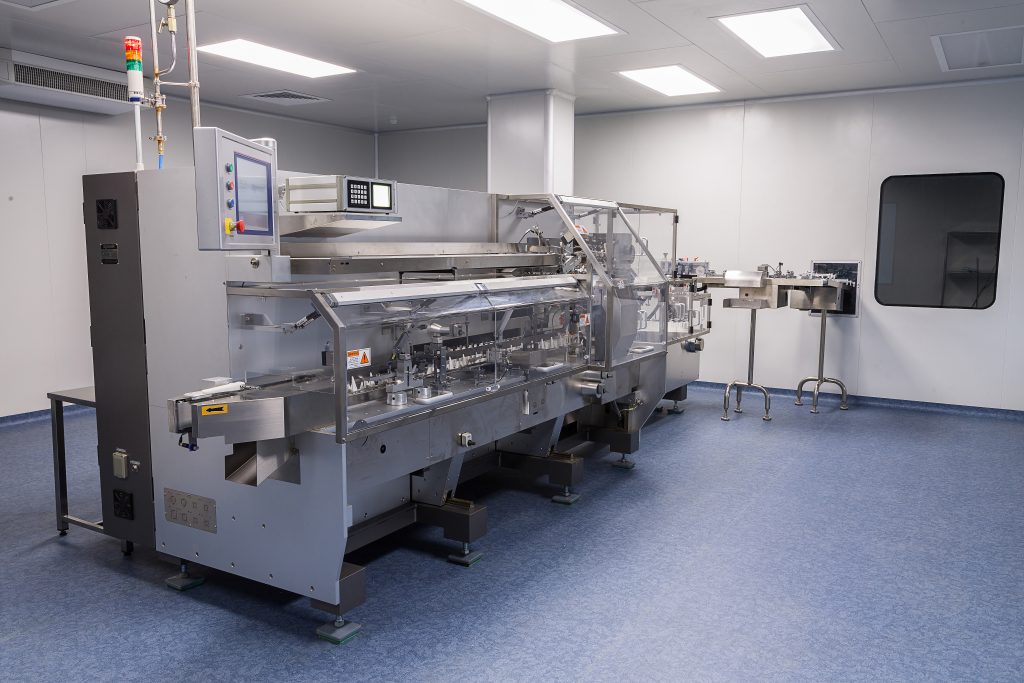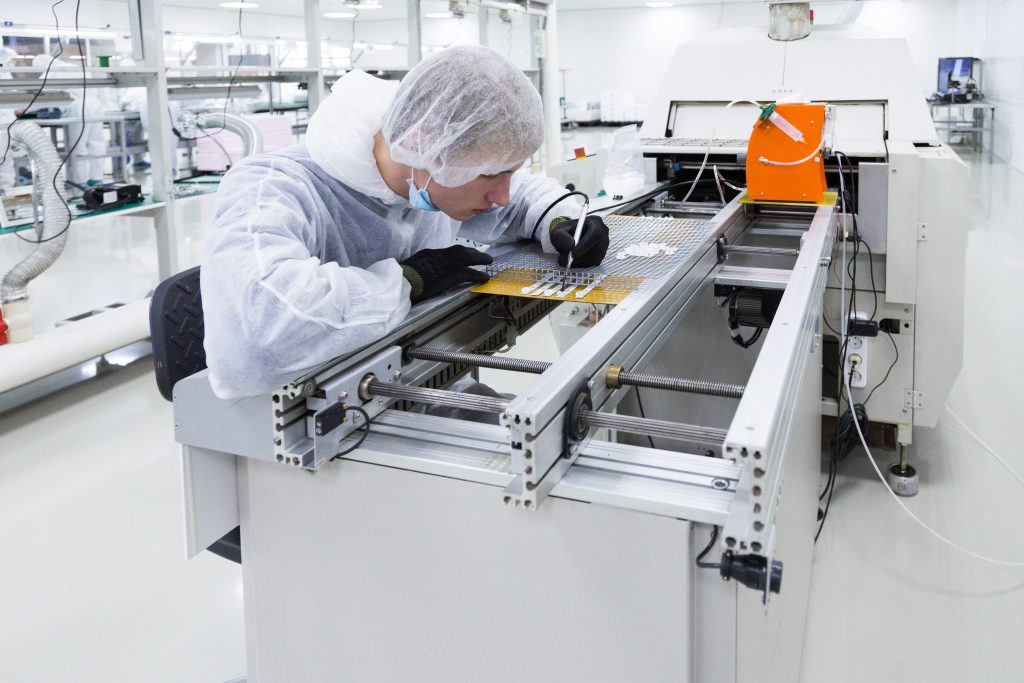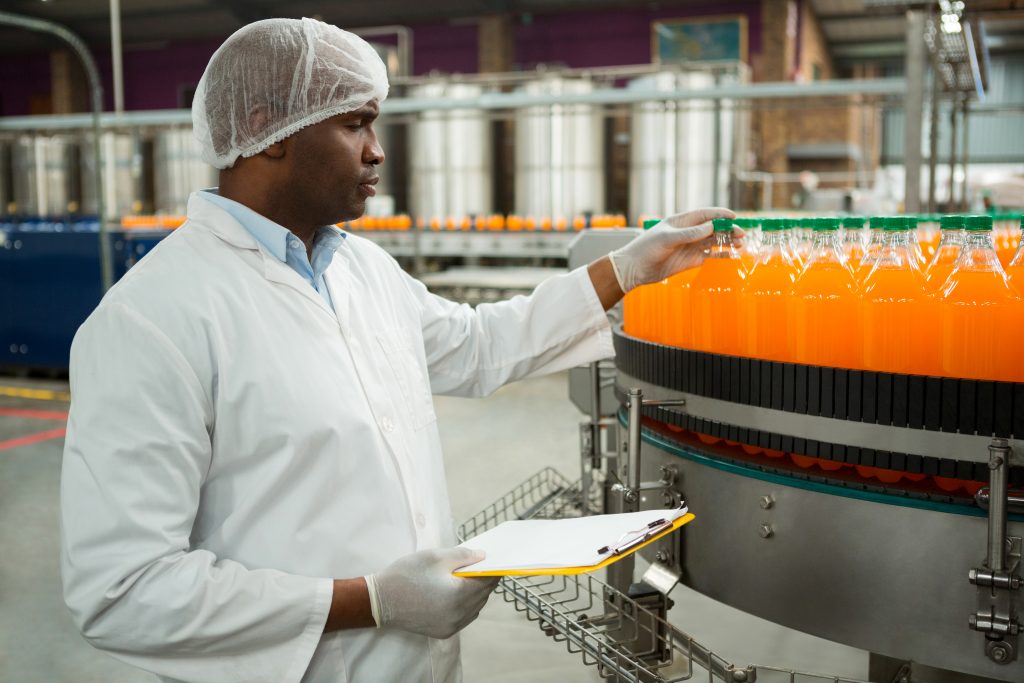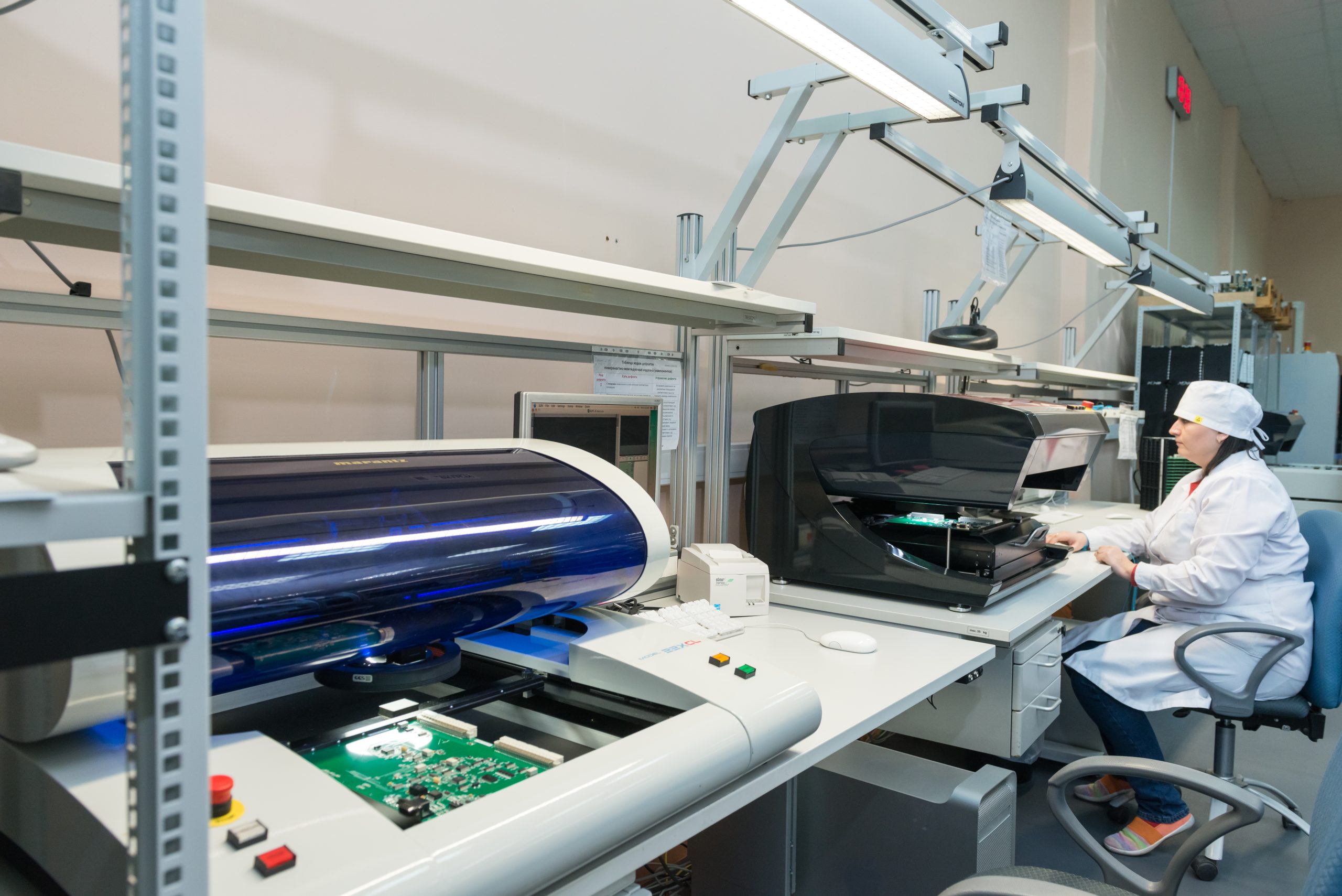Introduction:
Food Industry – Printing technology has revolutionized various industries, and the food industry is no exception. In an era where visual appeal plays a vital role in attracting customers, the art of printing has found its way onto edible canvases. Printing for the food industry combines creativity, innovation, and culinary expertise to create visually stunning and enticing products that captivate customers’ senses.
Gone are the days when food presentation solely relied on traditional cooking techniques and garnishing. With advancements in printing technology, food professionals can now transform ordinary dishes into culinary masterpieces by adding intricate designs, vibrant colors, and personalized touches. Whether it’s a delicate pattern on a cake, a custom logo on a cookie, or a detailed image on a latte, printing techniques are enhancing the visual allure of food in ways never seen before.
The impact of printing for the food industry goes beyond mere aesthetics. It allows businesses to unleash their creativity and brand identity, enabling them to establish a strong connection with their customers. From personalized messages for special occasions to branded products that reflect a company’s values, printing technology offers endless possibilities for customization and brand promotion within the food industry.
What is the marketing of the food industry?
Food marketing takes many forms and can involve building relationships with customers, raising brand awareness, developing new products, promoting them through advertising, and even paying grocery stores for prominent shelf space, all with the goal of promoting sales.
The marketing of the food industry refers to the strategies, techniques, and activities employed to promote and sell food products and services to consumers. It encompasses a wide range of practices, including advertising, branding, packaging, pricing, and distribution. The goal of food marketing is to create awareness, generate interest, and ultimately persuade consumers to purchase a particular food product or dine at a specific establishment.
Food marketing involves understanding consumer preferences, trends, and behavior to develop targeted campaigns that appeal to the intended audience. It encompasses various channels such as television, radio, print media, social media platforms, and online advertising. Additionally, food marketers utilize market research to identify consumer needs and desires, enabling them to create products and services that align with current market demands.
One of the key aspects of food marketing is branding. Companies strive to build strong brand identities that differentiate their products from competitors and establish a loyal customer base. Effective branding often involves creating a distinct image, logo, and tagline that resonate with consumers and evoke positive emotions. It also includes establishing a consistent brand voice and personality across all marketing channels.
In recent years, digital marketing has become increasingly prominent in the food industry. Social media platforms provide a direct and interactive way for brands to engage with their target audience, share content, run promotional campaigns, and gather valuable consumer feedback. Influencer marketing has also gained traction, with brands collaborating with popular food bloggers, vloggers, and social media personalities to reach a broader audience and leverage their influence.

Why is marketing important in the food industry?
Marketing plays a crucial role in the food and drinks sector. It helps businesses to attract and retain customers, increase sales, and grow their brand. One of the main ways that marketing helps the food and drinks sector is by creating brand awareness and customer loyalty.
Marketing is crucial in the food industry for several reasons. Firstly, it helps create awareness and visibility for food products and services. With numerous options available to consumers, effective marketing ensures that a particular brand or product stands out from the competition. Through various marketing channels such as advertising, social media, and packaging, companies can reach a wide audience and inform them about their offerings.
Secondly, marketing plays a significant role in influencing consumer behavior and shaping purchasing decisions. By employing persuasive tactics and highlighting the unique selling points of a food product, marketers can generate interest and desire among consumers. They can convey the value, quality, and benefits of the product, making it more appealing and increasing the likelihood of a purchase. Through effective branding and positioning, marketing can also create an emotional connection with consumers, fostering loyalty and repeat business.
Through market research and analysis, marketers can identify emerging demands, understand consumer needs, and develop new products or modify existing ones to meet those requirements. By staying attuned to consumer behavior, marketing helps companies stay relevant and responsive to evolving market dynamics.
Marketing is also essential for building and maintaining a strong brand image and reputation. A well-crafted marketing strategy can establish a brand identity that resonates with consumers, conveying trust, credibility, and reliability. Consistent messaging, effective storytelling, and positive customer experiences all contribute to shaping the perception of a food brand in the market. A strong brand image not only attracts customers but also helps withstand competition and maintain customer loyalty.
What is the process of food printing?
Three-dimensionally printed food is created from a semi-automated, additive manufacturing process that layers edible filament to create various eatables. These printers recreate an uploaded artwork, original or pre-fixed, from a digital file using computer-aided design, or CAD, software.
Food printing, also known as 3D food printing, is an innovative technology that combines the principles of additive manufacturing with culinary arts to create edible and customized food products. The process of food printing typically involves several steps. Firstly, a digital model of the desired food item is created using specialized software or 3D scanning techniques. This model is then sent to a food printer, which is equipped with food-grade materials and cartridges filled with edible ingredients such as purees, gels, or pastes.
The printer uses a layer-by-layer approach, where each layer of the food is precisely deposited onto a build plate or platform. This layering process continues until the final food product is fully formed. During the printing process, the printer’s nozzles or extruders carefully control the flow and placement of the edible materials to achieve the desired shape and texture. Once the printing is complete, the food product may require additional steps such as baking, chilling, or garnishing to enhance its taste, appearance, and structural integrity.
Food printing technology offers numerous advantages, including the ability to create intricate designs, tailor-made nutrition profiles, and personalized culinary experiences. It also has the potential to address challenges related to food waste, as it allows for precise ingredient measurements and portion control. Moreover, food printing opens up possibilities for creating novel food textures and combinations that would be difficult to achieve through traditional cooking methods.

How many types of food printing are there?
2 Types of 3D food printers. Most 3D food printers adopt some kind of fused deposition modelling (FDM), an additive “filament” deposition technology that works like most 3D hobby printers, except that the plastic filament is replaced by a syringe that is filled with some paste.
There are several types of food printing technologies that have emerged in recent years, each with its own unique approach to creating edible and customized food products. One type of food printing is extrusion-based printing, which is the most common and widely used method. Extrusion-based printers work by pushing edible materials, such as doughs or pastes, through a nozzle to create the desired shape. These printers often have multiple nozzles to allow for the simultaneous deposition of different ingredients, enabling the creation of complex food structures.
Another type of food printing is powder-based printing, which involves using powdered food materials, such as sugar, chocolate, or powdered proteins. The printer selectively deposits the powder onto a build plate, layer by layer, using either inkjet-like technology or by using a laser to selectively melt the powder particles to form solid structures. Powder-based printing is often used for creating intricate designs, decorations, or textured food products.
Gelation-based printing is another approach where edible gels or hydrocolloids are used as the printing materials. These gels are deposited layer by layer and then solidify or set to form the desired food structure. Gelation-based printing is particularly useful for creating foods with unique textures, such as gummies, custards, or gel-based desserts.
How has 3D printing changed the food industry?
3D printing will revolutionize food products, and the market for 3D printers is driven by the need for customization with time savings. With the technology, it will be easier to customize ingredients and nutrients, minimize chemical additives, and advance sustainability in food.
3D printing has revolutionized the food industry, introducing innovative ways of manufacturing, designing, and consuming food. This technology has brought about significant changes in various aspects of the industry, ranging from customization and efficiency to sustainability and culinary creativity. One of the most notable impacts of 3D printing on the food industry is the ability to create intricate and personalized designs with great precision. Chefs and food designers can now craft complex shapes and textures that were previously challenging to achieve by traditional means. This level of customization enables chefs to cater to individual dietary restrictions, preferences, and nutritional needs, offering a more personalized dining experience.
Alternative ingredients, such as algae or insects, can be transformed into palatable and visually appealing dishes through the manipulation of their texture and form. This innovation not only diversifies the available food sources but also addresses environmental concerns associated with traditional livestock farming.
The introduction of 3D printing in the food industry has also sparked culinary creativity and experimentation. Chefs and food enthusiasts can push the boundaries of gastronomy, exploring new flavors, textures, and presentations. With the ability to print intricate and delicate structures, dishes can become works of art, enhancing the overall dining experience.

How does printing technology enhance the visual appeal of food?
Printing technology plays a significant role in enhancing the visual appeal of food by offering precise control over the creation and presentation of food designs. With the ability to translate digital models into tangible food items, food printers enable chefs and culinary professionals to bring their artistic visions to life in ways that were previously challenging or time-consuming. The technology allows for intricate and complex designs to be replicated with accuracy, resulting in visually stunning food presentations.
One of the key ways printing technology enhances visual appeal is through the creation of intricate patterns and textures. By controlling the deposition of edible materials layer by layer, food printers can produce precise designs, geometrical shapes, or even intricate lace-like patterns that are difficult to achieve manually. These visually appealing elements can add depth, visual interest, and a touch of elegance to the overall presentation of the food.
Food printers also enable the use of multiple colors in the printing process. By utilizing cartridges filled with edible inks or pigments, printers can deposit different hues onto the food surface, creating vibrant and eye-catching color combinations. This capability is particularly useful for designing visually appealing desserts, cakes, or decorative elements that require precise color coordination.
What practical purposes does printing serve in food packaging and presentation?
Printing technology serves several practical purposes in food packaging and presentation, enhancing both the functionality and visual appeal of food products. One of the primary purposes is providing essential information to consumers. Food packaging often includes printed labels that convey important details such as ingredient lists, nutritional information, allergen warnings, expiration dates, and storage instructions. Printing ensures that this crucial information is clearly and accurately communicated, allowing consumers to make informed choices about the food they purchase and consume.
Printing also plays a vital role in branding and marketing. Packaging designs can be printed with eye-catching logos, brand names, and images that help establish brand recognition and create a cohesive brand identity. In a competitive market, visually appealing packaging can attract consumers’ attention and differentiate a product from its competitors. Printing technology allows for the incorporation of vibrant colors, attractive graphics, and creative designs, enabling food companies to create packaging that stands out on store shelves and entices potential customers.
Batch numbers, barcodes, QR codes, and other tracking codes can be printed on food packaging to facilitate inventory management, supply chain tracking, and quality control. These codes can be easily scanned or read, allowing for efficient stock management, traceability of ingredients, and rapid response in the event of a product recall.

How does printing technology contribute to the overall culinary experience?
Printing technology contributes significantly to the overall culinary experience by expanding the creative possibilities, personalization options, and presentation techniques in the world of food. Through the use of food printers, chefs and culinary professionals can push the boundaries of their culinary artistry, creating visually stunning and intricately designed food items that captivate the senses. The precise control over the deposition of edible materials allows for the creation of unique textures, shapes, and patterns that would be challenging to achieve manually. This level of craftsmanship adds a new dimension to the culinary experience, enticing both the eyes and the taste buds.
Chefs can tailor food items to meet individual preferences, dietary restrictions, or specific nutritional needs. Whether it’s creating personalized cakes, customizing the design of chocolate decorations, or producing intricate patterns on pastries, printing technology allows for a level of personalization that enhances the overall dining experience and creates a sense of exclusivity for the consumer.
With the ability to precisely control the deposition of edible materials, chefs can create intricate layers, assemble complex structures, or even incorporate hidden surprises within their dishes. This innovation not only provides a unique and memorable culinary experience for diners but also encourages continuous exploration and creativity within the culinary community.
Conclusion:
printing technology has emerged as a powerful tool in the food industry, transforming ordinary food items into visually captivating creations that tempt and delight customers. The ability to apply intricate designs, vibrant colors, and personalized touches to edible canvases has revolutionized food presentation and branding.
Through printing, businesses can unleash their creativity and establish a strong connection with their customers. Customization plays a significant role in attracting and retaining a loyal customer base, as personalized messages and designs on food products create a sense of exclusivity and uniqueness.
As the food industry continues to evolve, printing technology will likely play an even greater role in enticing customers. The possibilities for innovation and creativity are endless, and the ability to create visually stunning and customized food products will undoubtedly contribute to the success of businesses in this highly competitive industry. By embracing printing techniques, food establishments can captivate their customers’ senses and elevate the overall dining experience to new heights.


